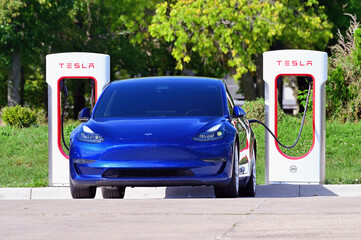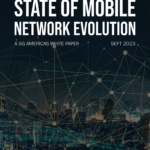
Why Tesla Chargers Require Cellular Connectivity
Tesla’s charging network is much more than just a set of power stations scattered across the world. It’s a sophisticated, highly connected system that relies on cellular connectivity to deliver a seamless and efficient charging experience for its users. While many charging stations simply provide power, Tesla’s chargers are designed to integrate with a vast network of services that enhance both functionality and user convenience. Here’s why cellular connectivity is such a crucial part of Tesla’s charging infrastructure.
Remote Monitoring and Management
One of the most important aspects of Tesla’s charging stations is the ability to monitor them remotely. Cellular connectivity allows Tesla to keep an eye on the status and performance of each station, regardless of its location. This makes it possible for Tesla to spot issues in real-time and even fix certain problems remotely, without the need for on-site visits. This capability not only reduces downtime but also cuts down on maintenance costs.
Real-Time Pricing and Payment Processing
Tesla’s chargers don’t just deliver electricity—they also deliver the ability to handle complex pricing and payment transactions. Cellular connectivity ensures that Tesla’s stations can access up-to-date electricity rates and apply dynamic pricing based on the time of day or demand. This feature also allows Tesla to securely process payments via credit card or a Tesla account, offering a smooth transaction experience for drivers.
Over-the-Air Updates
Just like Tesla vehicles, the charging stations themselves are capable of receiving over-the-air software updates. These updates can improve the station’s functionality, fix bugs, or introduce new features. Thanks to cellular connectivity, Tesla can push updates to its charging network without requiring any manual intervention, ensuring that each station is running the latest software version at all times.
Usage Data Collection
Cellular connectivity also enables Tesla to gather valuable usage data from its charging stations. This data, including information about peak usage times, charging durations, and power delivery rates, helps Tesla optimize its network. By analyzing this data, Tesla can make informed decisions about where to place new charging stations or how to enhance the performance of existing ones.
User Authentication
For Tesla owners, a seamless and secure charging experience is essential. Cellular connectivity enables user authentication, allowing drivers to quickly and easily link their vehicles to their Tesla account when they arrive at a charging station. This authentication process ensures that users are billed correctly and that their charging session proceeds smoothly.
Charging Station Availability
Real-time information about available charging stalls is essential for planning long road trips. Thanks to cellular connectivity, Tesla drivers can check the status of nearby charging stations directly through the Tesla app. The app provides live updates on how many stalls are available, helping drivers avoid waiting or detouring to stations with long lines.
Integration with Tesla’s Navigation System
Tesla’s integrated navigation system takes full advantage of cellular data. The system can route drivers to the nearest available charging station based on factors such as stall availability, charging speed, and the vehicle’s current battery level. This makes it easier for drivers to plan their journeys and ensures that they won’t be left stranded without charging options.
Load Balancing and Grid Integration
With the growing adoption of electric vehicles, managing electricity demand is becoming more critical. Tesla’s chargers use cellular connectivity to communicate with power grids, enabling smart features like load balancing and demand response. This integration also facilitates the use of renewable energy sources, allowing Tesla to contribute to a more sustainable grid.
While it might seem that adding cellular connectivity to charging stations would increase complexity and cost, the benefits far outweigh these challenges. This connectivity not only makes Tesla’s charging stations more reliable and efficient but also sets them apart from many other charging solutions, offering a superior user experience that is both advanced and user-friendly




